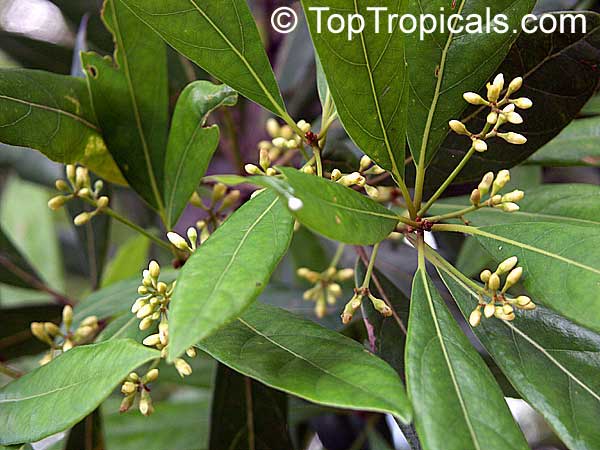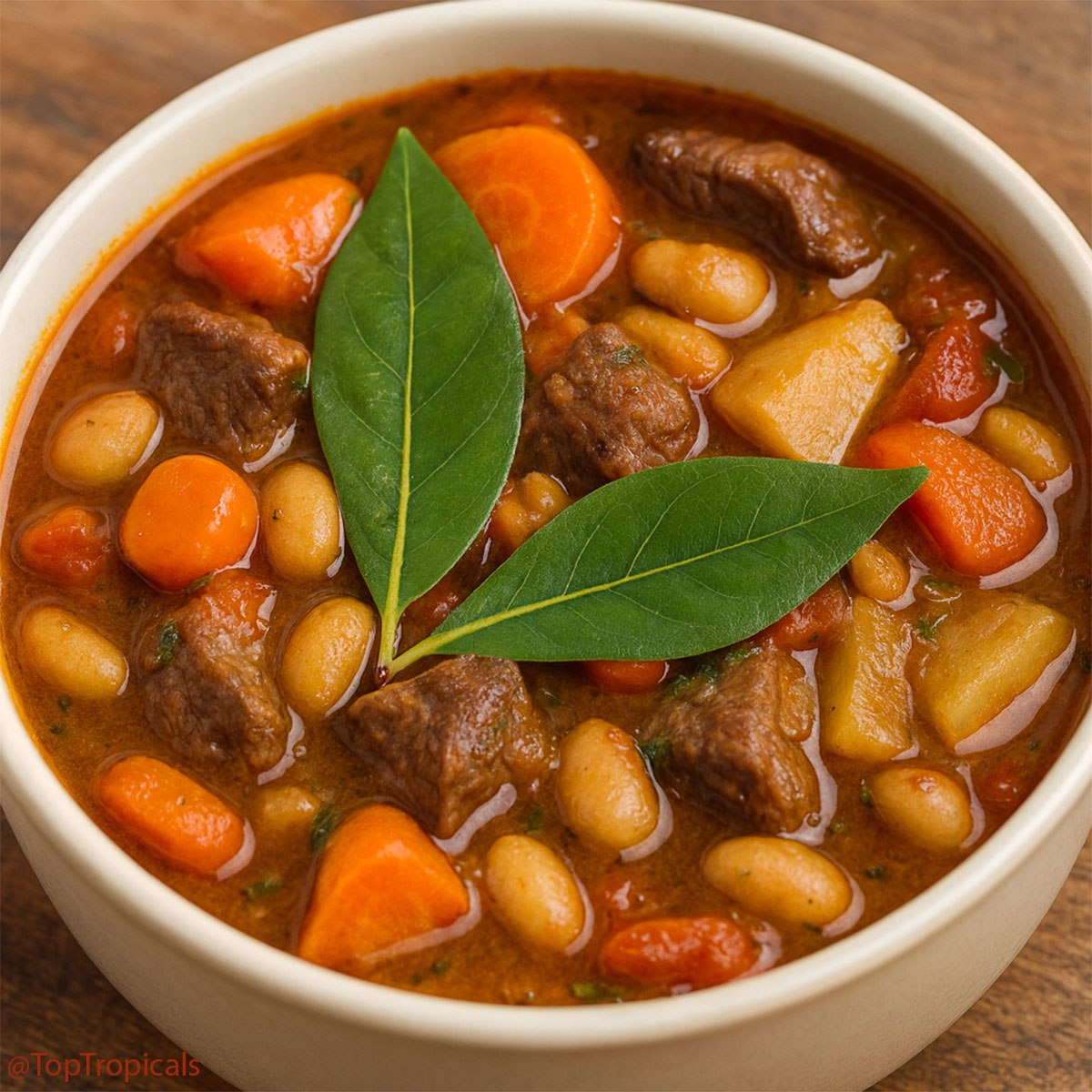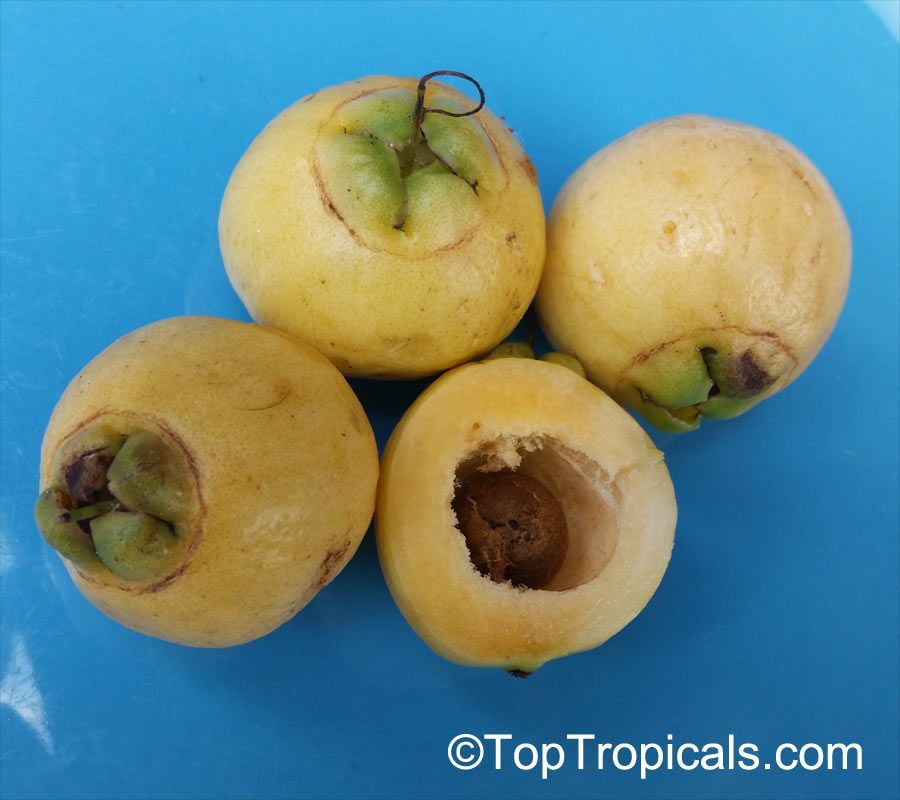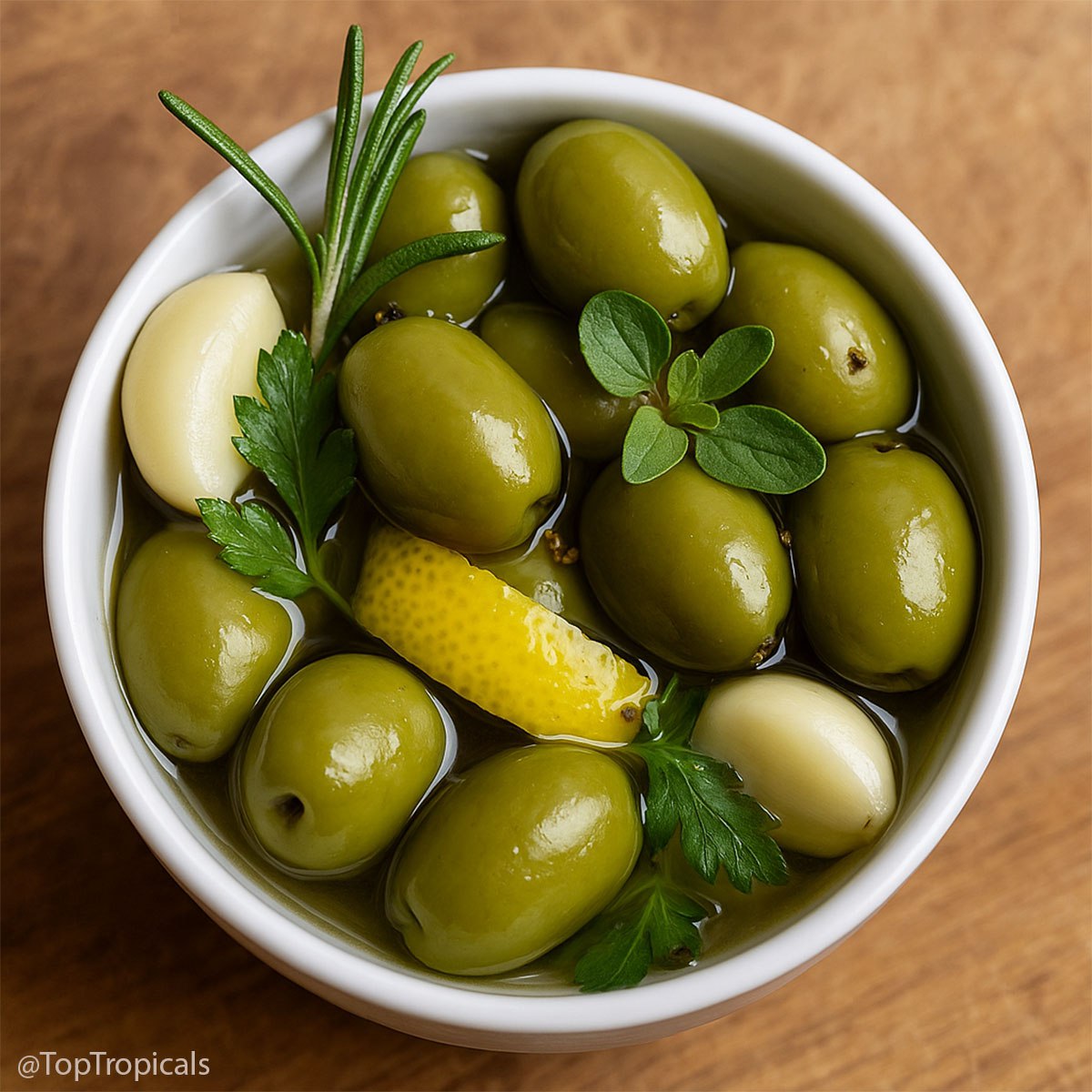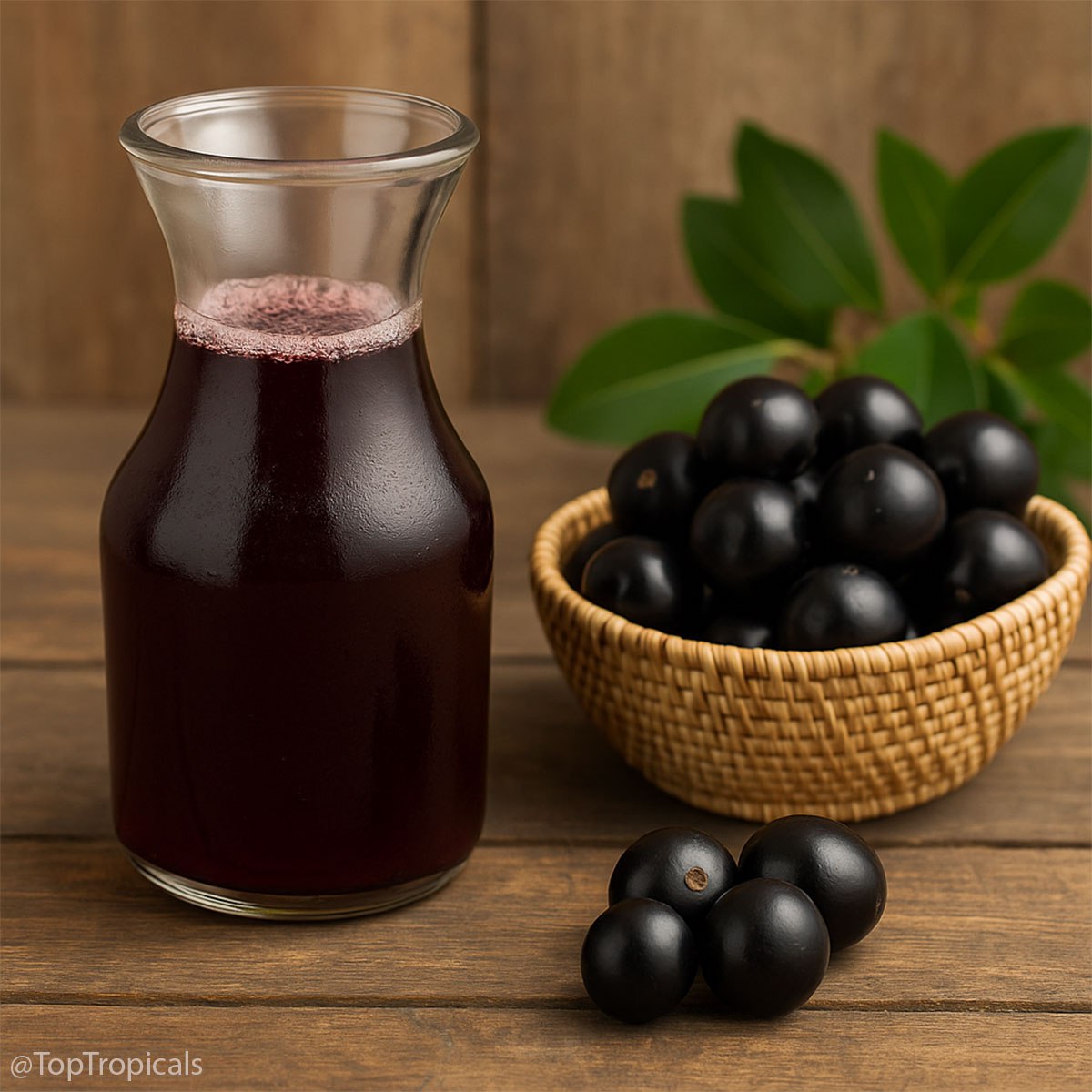Garden Blog - Top Tropicals
Allspice leaf stew: quick-n-fun exotic recipes
🍴 Allspice leaf stew: quick-n-fun exotic recipes
🛒 Your own Allspice Tree keeps ultimate spice handy
📚 Learn more:
#Food_Forest #Recipes
🟢 Join 👉 TopTropicals
- 🟢Simmer fresh allspice leaves with meat, beans, and vegetables.
- 🟢Adds a deep clove-cinnamon flavor without any powder.
- Fresh allspice leaves
- Meat
- Beans
- Mixed vegetables
- Simmer fresh allspice leaves with meat, beans, and vegetables.
- Cook until tender and aromatic.
Allspice Leaf Stew
Ingredients
Instructions
🛒 Your own Allspice Tree keeps ultimate spice handy
📚 Learn more:
- ▫️What spice comes from the small dried flower buds of a tropical tree?
- ▫️What tree will produce for you right away?
#Food_Forest #Recipes
🟢 Join 👉 TopTropicals
Edible cactus with health benefits that your tortoise will love too

Opuntia cochenillifera - Velvet Nopal Cactus, Nopales, Prickly Pear, leaves and flower

Opuntia cochenillifera - Velvet Nopal Cactus, Nopales, Prickly Pear, leaves
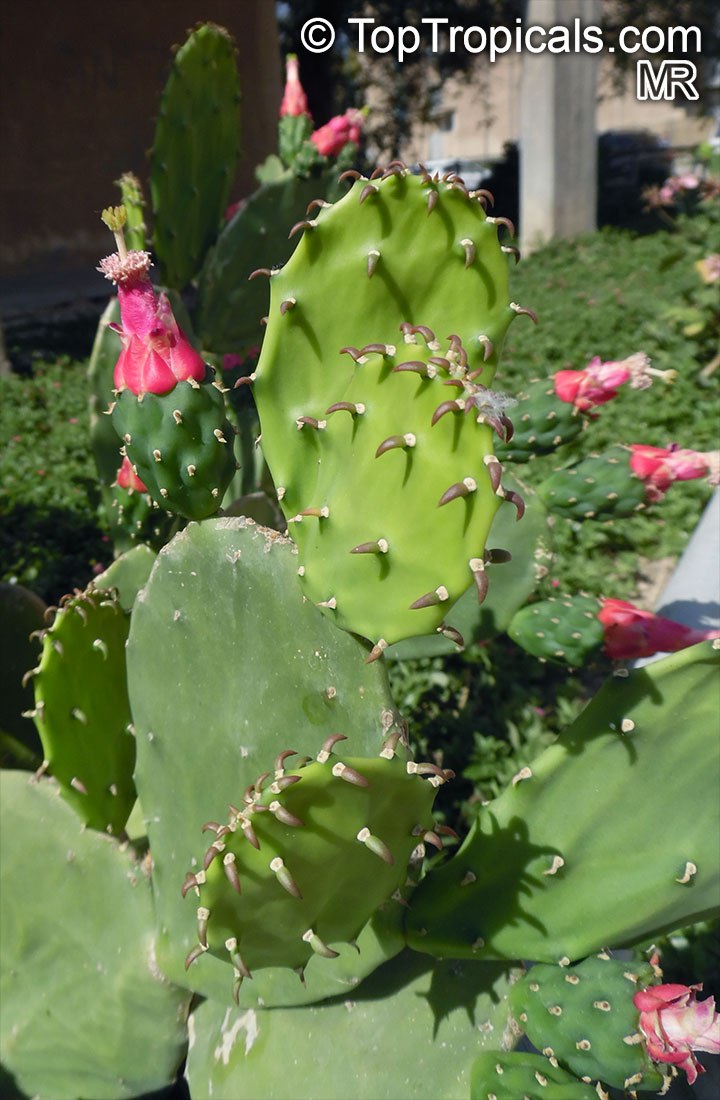
Opuntia cochenillifera - Velvet Nopal Cactus, Nopales, Prickly Pear, leaves and flowers
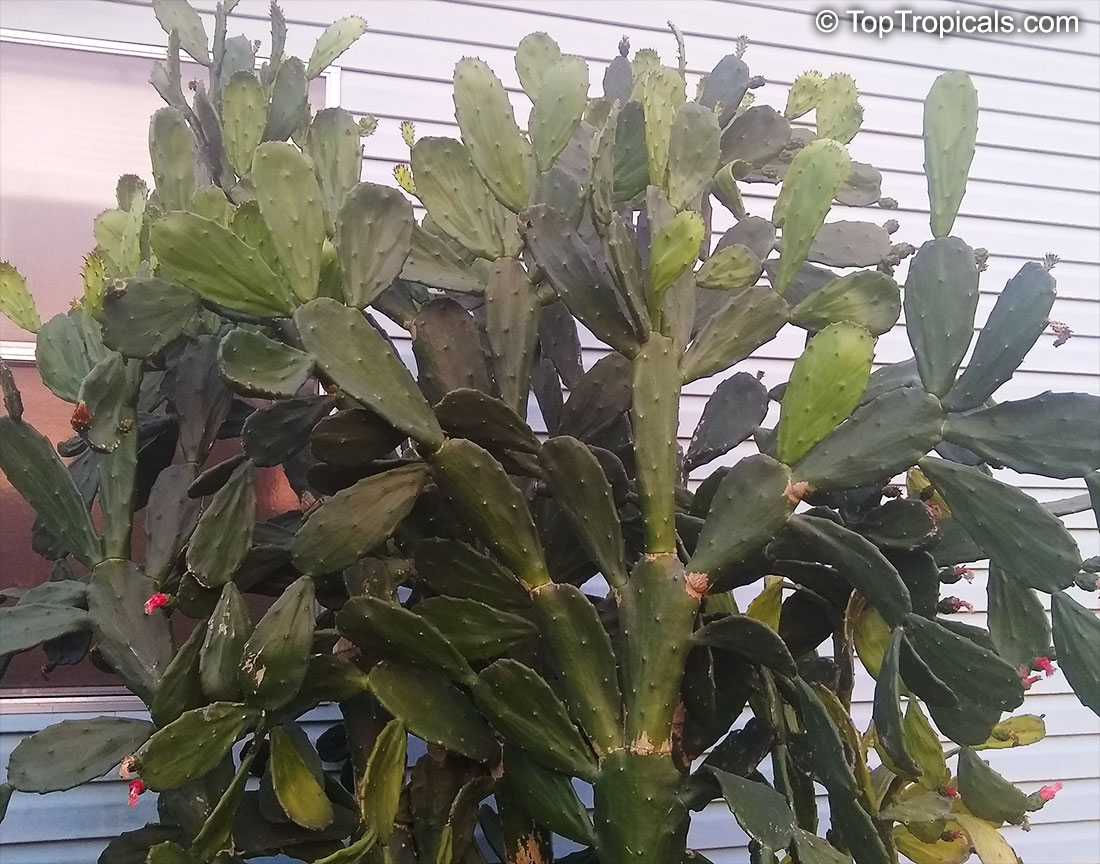
Opuntia cochenillifera - Velvet Nopal Cactus, Nopales, Prickly Pear, large plants
🐢 Edible cactus with health benefits that your tortoise will love too
🛒 Plant your own food and pharmacy Nopales
#Food_Forest #Remedies
🟢 Join 👉 TopTropicals
- 🌵 Opuntia cochenillifera - Velvet Nopal Cactus, Nopales, Prickly Pear - is one of the most useful and forgiving cactus species you can grow. Unlike most desert cacti, this one thrives even in humid tropical climates like Florida, making it one of the few rain-tolerant cacti that actually loves moisture. Fast-growing and ornamental, it produces bright red flowers and makes a beautiful, low-maintenance landscape plant that thrives in heat, drought, and even neglect.
- 🌵 Prickly Pear is a very valuable edible, used as a vegetable with impressive medicinal properties. The young pads, called nopales, can be stir-fried or sauteed with onions and garlic for a tangy, nutrient-rich side dish.
- 🌵 In Hispanic cooking, this plant is known simply as Nopal or Nopales – a traditional ingredient used in dishes like ensalada de nopales (nopal salad), nopales con huevo (eggs with cactus), and nopales asados (grilled cactus).
- 🌵 Regularly eating Nopales has been linked to improved blood sugar control, and many people who include it in their diet report significant help in managing diabetes.
- 🌵 Nopales is also a favorite treat for tortoises and other herbivorous pets. Its smooth, spineless pads are packed with hydration and nutrients, making it a safe, natural food source.
- 🌵 So, this is not just a cactus - it’s a food, medicine, and ornament all in one. Tough, beautiful, and endlessly useful!
🛒 Plant your own food and pharmacy Nopales
#Food_Forest #Remedies
🟢 Join 👉 TopTropicals
Rose apple salad: quick-n-fun exotic recipes
🍴 Rose apple salad: quick-n-fun exotic recipes
🛒 Plant exotic Rose Apple Tree
📚 Learn more:
Fruit that smells like roses
#Food_Forest #Recipes
🟢 Join 👉 TopTropicals
- 🔴Slice rose apples, toss with cucumber, lime, and mint.
- 🔴Light, crunchy, and fragrant.
Rose Apple Salad
Ingredients
- Rose apples
- Cucumber
- Lime
- Mint
Instructions
- Slice rose apples and cucumber.
- Toss with lime and fresh mint.
- Serve fresh and chilled.
🛒 Plant exotic Rose Apple Tree
📚 Learn more:
Fruit that smells like roses
#Food_Forest #Recipes
🟢 Join 👉 TopTropicals
Marinated green olives: quick-n-fun exotic recipes
🍴 Marinated green olives: quick-n-fun exotic recipes
🛒 Grow your own Olive tree
📚 Learn more:
▫️How to grow your own Olive Oil
#Food_Forest #Recipes
🟢 Join 👉 TopTropicals
- 🟢Soak fresh Olives in brine with garlic, lemon peel, and herbs.
- 🟢A zesty snack after curing.
- Fresh olives
- Garlic
- Lemon peel
- Herbs
- Brine
- Soak fresh olives in brine with garlic, lemon peel, and herbs.
- Allow to cure until the flavor develops.
- Serve as a zesty snack.
Marinated Green Olives
Ingredients
Instructions
🛒 Grow your own Olive tree
📚 Learn more:
▫️How to grow your own Olive Oil
#Food_Forest #Recipes
🟢 Join 👉 TopTropicals
How to protect Avocado from cold and how hardy is it?
❄️ How to protect Avocado from cold and how hardy is it?
Growing Avocado trees in cooler regions is possible with the right variety and care. By choosing Cold Hardy types and protecting them during cold spells, you can successfully grow avocados outside tropical climates. The more mature your tree, the better it handles the cold.
❄️ Protection for young plants
With a little planning and protection, you can enjoy fresh avocados even in cooler climates!
✔️ Check outAvocado Variety Guide interactive chart. Sort them by flower type A or B, tree habit, fruit shape and quality, cold hardiness, origin, season and more!
🛒 Shop Cold Hardy Avocados
📖 Our Book: Avocado Variety Guide, Snack or Guacamole?
📚Learn more:
#Food_Forest #Avocado #How_to
🟢 Join 👉 TopTropicals
Growing Avocado trees in cooler regions is possible with the right variety and care. By choosing Cold Hardy types and protecting them during cold spells, you can successfully grow avocados outside tropical climates. The more mature your tree, the better it handles the cold.
- ❄️ What is Avocado cold hardiness?
Most Avocados are sensitive to frost, but some Mexican varieties can survive lows around 15°F once established, and brief dips near 10°F with good care.
- 👉 Cold tolerance depends on:
- ✦ Duration of cold: Short freezes are easier to survive.
- ✦ Sun exposure: More sun means better cold resistance.
- ✦ Wind protection: Wind can do more harm than temperature alone.
- ✦ Tree health: Regular fertilization, such as Sunshine Boosters, helps strengthen plants.
- ❄️ How to protect avocados from cold
- ✦ Bigger is better: Mature trees resist cold better than young ones.
- ✦ Wind protection: Plant on the south or southeast side of a building for warmth.
- ✦ Good fertilization: Healthy trees are stronger and more resilient.
- ✦ Watering: Water less in winter; overwatering in cold weather can cause root rot.
❄️ Protection for young plants
- ✦ Cover and mulch: Before a freeze, mound mulch around the base and cover with a blanket. Add Christmas lights or a small heater for extra warmth (use caution).
- ✦ Use microclimates: Plant near walls or buildings where it’s warmer and wind is reduced.
With a little planning and protection, you can enjoy fresh avocados even in cooler climates!
✔️ Check outAvocado Variety Guide interactive chart. Sort them by flower type A or B, tree habit, fruit shape and quality, cold hardiness, origin, season and more!
🛒 Shop Cold Hardy Avocados
📖 Our Book: Avocado Variety Guide, Snack or Guacamole?
- ·
📚Learn more:
- · Can I Grow Avocado Outside the Tropics?
- · Avocado Variety Guide
- · How to grow cold-hardy avocados and how cold-hardy are they?
- · Avocado that laughs at frost: Mexicola Grande for cooler climates
- · Cold hardy Avocado Joey: you can eat with the skin
- · Posts about #Avocado
#Food_Forest #Avocado #How_to
🟢 Join 👉 TopTropicals
The secret Brain Food growing in my backyard (and it tastes like green peas!)
Tropical Asparagus (Sauropus androgynus)
🏆 The secret Brain Food growing in my backyard (and it tastes like green peas!)
🛒 Add Katuk Superfood to your Food Forest
Lean more:
🍴 Katuk egg stir-fry: Quick-n-Fun exotic recipes
✔️ Discover the health benefits of Katuk: a Superfood for your mind and body
📚 Tropical Asparagus, Katuk: Grow your own food
📱 How to cook with Katuk
#Food_Forest #Remedies #Discover
🟢 Join 👉 TopTropicals
- 🌿 Katuk, or Tropical Asparagus (Sauropus androgynus), is one of the most underrated edible plants you can grow. This leafy tropical shrub is a superfood in disguise. It grows fast, looks lush, and its tender young shoots taste just like green peas.
- 🌿 Native to Southeast Asia, Katuk is a kitchen staple in places like Vietnam, Malaysia, and Thailand. The leaves and shoots are used in soups, stews, and stir-fries with egg or seafood. It’s not only delicious but also incredibly nutritious - rich in nutrients linked to improved memory and reduced cognitive aging: folate, lutein, and especially vitamin K, which is rare in plants.
- 🌿 Katuk thrives in sun or partial shade, needs little care, and grows into a dense, bushy plant that gives you edible greens all year round. If you want something that feeds both your garden and your health, this one’s a winner!
🛒 Add Katuk Superfood to your Food Forest
Lean more:
🍴 Katuk egg stir-fry: Quick-n-Fun exotic recipes
✔️ Discover the health benefits of Katuk: a Superfood for your mind and body
📚 Tropical Asparagus, Katuk: Grow your own food
📱 How to cook with Katuk
#Food_Forest #Remedies #Discover
🟢 Join 👉 TopTropicals
Cashews: more magnesium than almonds!
Cashews: more magnesium than almonds!
🏆 More magnesium-rich fruit:
Avocado
Avocados are famous for their healthy fats, but they’re also surprisingly high in magnesium - about 58 mg per medium fruit. That’s one of the highest amounts among fruits. Their creamy texture and fiber content make them especially gentle on the stomach, helping digestion and easing constipation. Regularly adding avocado to meals can support gut health, muscle function, and overall mineral balance in a naturally delicious way.
🍍 Pineapple
Best known for its enzyme bromelain, pineapple also provides a helpful 20 mg of magnesium per cup. While not the top source, it offers a rare combination of fiber, enzymes, and minerals that benefit the digestive system. Bromelain helps reduce inflammation in the gut, and magnesium keeps digestive muscles relaxed. Together, they make pineapple a light, refreshing choice for better digestion and a balanced system.
✅ How to get more magnesium:
🛒 Explore your future food forest: fruit and edibles
📚 Learn more:
#Food_Forest #Remedies #Discover
🟢 Join 👉 TopTropicals
- 🌰 Cashews might be the real nutty winner when it comes to magnesium. One ounce provides about 83 mg, or roughly 20% of your daily need, slightly topping almonds at 76 mg, according to Verywell Health.
- 🌰 Magnesium plays a key role in your body’s daily operations - it helps your heart, muscles, and bones function properly, keeps blood pressure steady, and supports your energy and metabolism. Yet many people still fall short of getting enough.
- 🌰 Along with magnesium, cashews are packed with protein, healthy fats, copper, zinc, and iron - all nutrients your body depends on.
🏆 More magnesium-rich fruit:
Avocado
Avocados are famous for their healthy fats, but they’re also surprisingly high in magnesium - about 58 mg per medium fruit. That’s one of the highest amounts among fruits. Their creamy texture and fiber content make them especially gentle on the stomach, helping digestion and easing constipation. Regularly adding avocado to meals can support gut health, muscle function, and overall mineral balance in a naturally delicious way.
🍍 Pineapple
Best known for its enzyme bromelain, pineapple also provides a helpful 20 mg of magnesium per cup. While not the top source, it offers a rare combination of fiber, enzymes, and minerals that benefit the digestive system. Bromelain helps reduce inflammation in the gut, and magnesium keeps digestive muscles relaxed. Together, they make pineapple a light, refreshing choice for better digestion and a balanced system.
✅ How to get more magnesium:
- • Eat a mix of magnesium-rich foods every day - your body only absorbs about half of what you consume.
- • Try pairing magnesium-rich sources. Add Cashews, Avocados, Bananas, Pineapple, or Spinach to your meals and snacks.
- • Remember, caffeine, age, and certain medications can reduce absorption, so balance your diet and check with your doctor if needed.
- • A handful of cashews can go a long way - for your heart, your energy, and your bones.
🛒 Explore your future food forest: fruit and edibles
📚 Learn more:
- ▫️Grow your own brain food: avocado and cacao
- ▫️Plant a fruit tree - and breathe easier: fruit might be the surprising key to healthier lungs
- ▫️Tropical fruit health benefits guide - what fruit and edibles can help with health issues and vitamin deficiencies, Part 1 and Part 2.
- ▫️Five best fruit trees to plant in Summer
- ▫️10 best fruit trees to grow in Florida and Southern landscapes
- ▫️Top 10 fruiting plants you'll ever need for your health benefits
#Food_Forest #Remedies #Discover
🟢 Join 👉 TopTropicals
Tropical fruits that help you sleep better
🍒 Tropical fruits that help you sleep better
🌱 Looking for a natural way to fall asleep faster? Skip the pills and head for the fruit bowl. Some tropical fruits are surprisingly rich in melatonin, the hormone that tells your body it's bedtime. According to a study referenced by New York City Nutrition, eating melatonin-rich fruits about an hour before bedtime can naturally support better sleep quality.
😴 Melatonin naturally rises at night, helping you feel sleepy and cooling your body temperature. But things like blue light from phones, jet lag, or late-night stress can throw it off. That’s where certain fruits can help - they either contain melatonin or boost your body’s ability to make it.
🍒 Cherries
Both sweet and tart cherries are sleep boosters. Tart cherry juice is especially effective because it’s concentrated - studies show it can raise melatonin levels and increase total sleep time. Just go easy on added sugar. Try pairing the juice with almonds or cheese to keep your blood sugar steady before bed.
🍍Pineapple
In one study, people who ate pineapple had a big jump in melatonin levels just two hours later. It’s also loaded with vitamin C and enzymes that aid digestion, making it a nice evening snack. Have it with a bit of protein, like yogurt or nuts, to avoid a sugar spike.
🍌 Banana
Bananas don’t contain much melatonin on their own, but they help your body make it. They’re full of tryptophan and magnesium, both of which support serotonin and melatonin production. A banana before bed can calm muscles and nerves - no wonder it’s a favorite natural sleep aid.
✅ Bottom line
A small fruit snack in the evening - cherries, pineapple, or banana - can help your body settle into sleep mode naturally. Eat it about an hour before bed, keep screens dim, and let nature do the rest.
🛒 Grow your own fruit and sleep better
📚 Learn more:
#Food_Forest #Remedies #Discover
🟢 Join 👉 TopTropicals
🌱 Looking for a natural way to fall asleep faster? Skip the pills and head for the fruit bowl. Some tropical fruits are surprisingly rich in melatonin, the hormone that tells your body it's bedtime. According to a study referenced by New York City Nutrition, eating melatonin-rich fruits about an hour before bedtime can naturally support better sleep quality.
😴 Melatonin naturally rises at night, helping you feel sleepy and cooling your body temperature. But things like blue light from phones, jet lag, or late-night stress can throw it off. That’s where certain fruits can help - they either contain melatonin or boost your body’s ability to make it.
🍒 Cherries
Both sweet and tart cherries are sleep boosters. Tart cherry juice is especially effective because it’s concentrated - studies show it can raise melatonin levels and increase total sleep time. Just go easy on added sugar. Try pairing the juice with almonds or cheese to keep your blood sugar steady before bed.
🍍Pineapple
In one study, people who ate pineapple had a big jump in melatonin levels just two hours later. It’s also loaded with vitamin C and enzymes that aid digestion, making it a nice evening snack. Have it with a bit of protein, like yogurt or nuts, to avoid a sugar spike.
🍌 Banana
Bananas don’t contain much melatonin on their own, but they help your body make it. They’re full of tryptophan and magnesium, both of which support serotonin and melatonin production. A banana before bed can calm muscles and nerves - no wonder it’s a favorite natural sleep aid.
✅ Bottom line
A small fruit snack in the evening - cherries, pineapple, or banana - can help your body settle into sleep mode naturally. Eat it about an hour before bed, keep screens dim, and let nature do the rest.
🛒 Grow your own fruit and sleep better
📚 Learn more:
- ▫️Plant a fruit tree - and breathe easier: fruit might be the surprising key to healthier lungs
- ▫️11 tropical fruits to eat instead of taking a fiber supplement
- ▫️Tropical fruit health benefits guide - what fruit and edibles can help with health issues and vitamin deficiencies, Part 1 and Part 2.
- ▫️Five best fruit trees to plant in Summer
- ▫️10 best fruit trees to grow in Florida and Southern landscapes
- ▫️Top 10 fruiting plants you'll ever need for your health benefits
#Food_Forest #Remedies #Discover
🟢 Join 👉 TopTropicals
Before you open a bottle of wine,
Jaboticaba (Myrciaria cauliflora)
🍷Before you open a bottle of wine, meet the Secret Wine Tree from Brazil
🛒 Grow your own wine from Jaboticaba Tree
📚 Learn more:
🎥 From our customer: video about a mail ordered Jaboticaba tree
#Food_Forest #Nature_Wonders #Container_Garden
🟢 Join 👉 TopTropicals
- 🍷Jaboticaba (Myrciaria cauliflora) grows grapes right on its trunk! It's one of Brazil’s most fascinating and beloved native fruits. Its name alone sounds exotic, but wait until you see it in fruit: shiny, grape-like berries bursting straight from the bark!
- 🍷 Jaboticaba is the source of the famous Brazilian wine Vinho Tinto de Jabuticaba. The fruits are small, dark purple, with a thick skin and a sweet, melting pulp that tastes a lot like black currant. They can be eaten fresh, made into jams, or fermented into homemade wine with an incredible aroma and rich color.
- 🍷 Jaboticaba tree is slow-growing and compact, often used as a bonsai because of its small leaves and graceful shape. But patience pays off - mature trees covered in purple fruits are absolutely stunning! The fruiting habit, called cauliflory, means the fruits grow directly from the trunk and main branches, creating a truly one-of-a-kind look.
- 🍷 Jaboticaba trees can handle some cold (down to mid-20's once mature), don't mind wet rainy seasons and can be grown in containers in cooler areas. They make beautiful landscape trees and conversation starters wherever they’re planted.
- 🍷 If you've ever dreamed of making your own wine from fruit grown in your backyard, this is the tree for you. Jaboticaba isn’t just a plant - it's an experience, a piece of Brazil's culture, and a living work of art that rewards patience with magic.
🛒 Grow your own wine from Jaboticaba Tree
📚 Learn more:
- ▫️What does Blue Jaboticaba taste like?
- ▫️How Blue Jaboticaba is different from regular Jaboticaba?
- ▫️What is Jaboticaba? I like the sound of this word!
- ▫️What is Cauliflory?
🎥 From our customer: video about a mail ordered Jaboticaba tree
#Food_Forest #Nature_Wonders #Container_Garden
🟢 Join 👉 TopTropicals
Jaboticaba wine: quick-n-fun exotic recipes
A homemade tropical wine with rich berry flavor and a hint of earthiness. This traditional Brazilian recipe turns fresh Jaboticaba fruit into a deep purple wine with a unique aroma and flavor somewhere between grape and plum. Easy to make, fun to share!
🍴 Jaboticaba wine: quick-n-fun exotic recipe
Ingredients
- 4 lb fresh ripe Jaboticaba fruits (Myrciaria cauliflora)
- 2 to 3 cups granulated sugar per gallon of pulp
- 1 gallon non-chlorinated water
- 1 tsp wine yeast (optional)
- 1 cinnamon stick or a few cloves (optional)
- Clean glass fermenting jar or food-grade bucket with loose cover
Instructions
- Wash and lightly crush Jaboticaba fruits. Do not remove skins; they add flavor and color.
- Mix crushed fruit with sugar and enough water to make about one gallon of pulp. Stir until sugar dissolves.
- Cover loosely and leave in a warm place (70-80F). Stir once or twice daily. Fermentation begins within 1-2 days.
- Let ferment 5-10 days, stirring daily. When bubbling slows, strain through cheesecloth into a clean jug.
- Seal loosely with an airlock or vented cap. Rest 2-4 weeks in a cool, dark spot (60-70F).
- Carefully pour clear wine into bottles, leaving sediment behind. Cork and let age a few more weeks.
- Chill before serving. Enjoy responsibly!
Tips
- Reduce sugar to 1.5 cups per gallon for a drier wine.
- Add more sugar after first fermentation for a sweeter dessert wine.
- Add a spoon of honey for a floral note.
- Save the skins to make Jaboticaba syrup or jam.
Grow your own exotic Jaboticaba fruit
📚 Learn more:
- ▫️What does Blue Jaboticaba taste like?
- ▫️How Blue Jaboticaba is different from regular Jaboticaba?
- ▫️What is Jaboticaba? I like the sound of this word!
#Food_Forest #Recipes
🟢 Join 👉 TopTropicals
